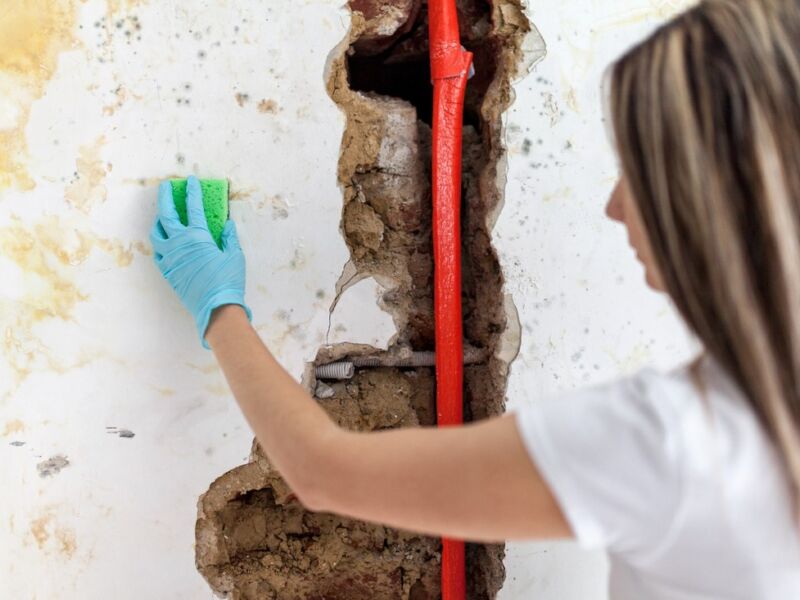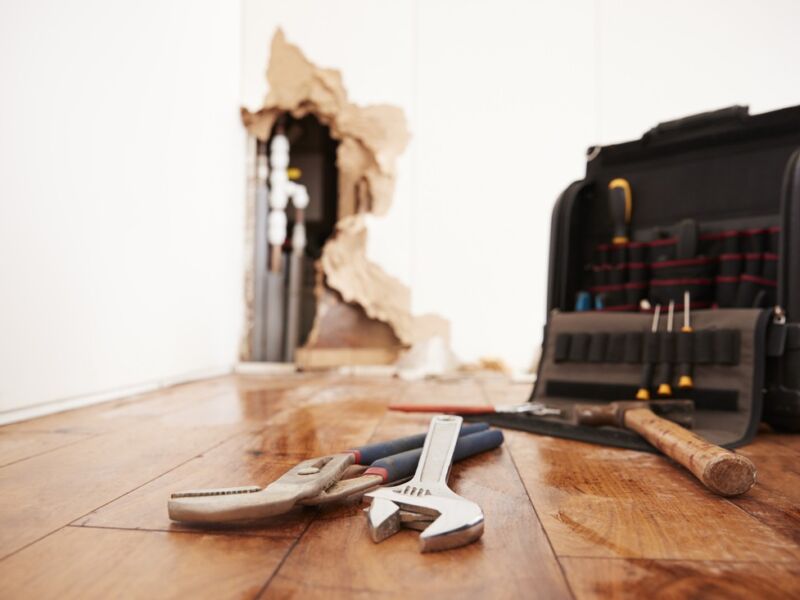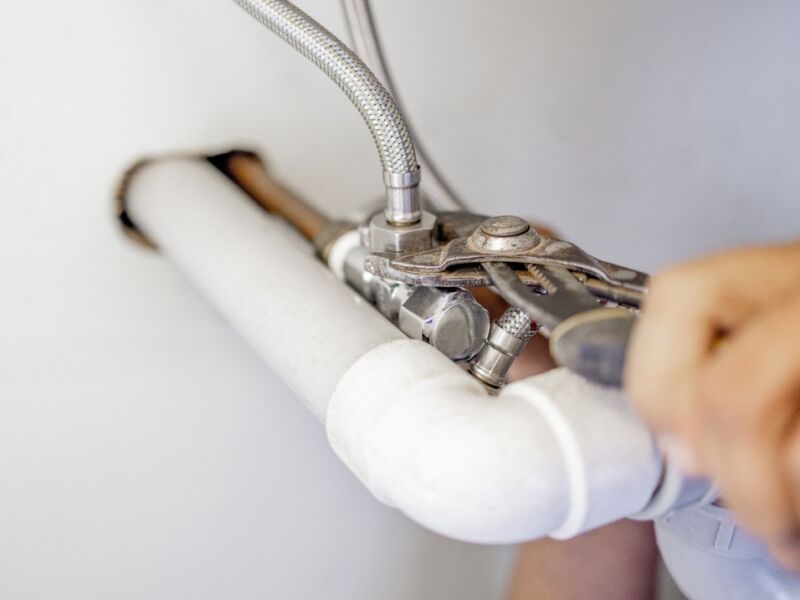
Introduction
Water damage to ceilings is a common problem that can result from various causes, including broken pipes, plumbing issues, and natural disasters. When water leaks into the ceiling, it can cause unsightly stains, mold growth, and structural damage. It is essential to address water damage promptly to prevent further deterioration and ensure the safety and integrity of the ceiling.
What Causes Water Damage to Ceilings?

Water damage to ceilings can be caused by a variety of factors:
- Broken Pipes: Broken or burst pipes are a common cause of water damage to ceilings. When a pipe leaks or bursts, water can seep into the ceiling, causing visible stains and potential structural damage.
- Plumbing Issues: Leaking or malfunctioning plumbing fixtures, such as toilets, sinks, and showers, can also lead to water damage on ceilings if the leakage goes unnoticed or is left unrepaired.
- Natural Disasters: Events like heavy rainstorms, flooding, or hurricanes can result in water infiltrating buildings and causing damage to ceilings, among other areas.
- Roof Leaks: Issues with the roofing system, such as damaged shingles or faulty flashing, can allow water to leak into the attic and subsequently dampen ceilings.
Repairing Water Damage to Ceilings
Repairing water damage to ceilings requires a systematic approach to ensure the restoration is effective and long-lasting. Here are some key steps involved in repairing water-damaged ceilings:
1. Identify the Source of Water Leakage

Prior to fixing the ceiling damage, it is crucial to identify and address the source of water leakage. This may involve inspecting plumbing pipes, checking the integrity of the roofing system, or evaluating potential drainage issues. By addressing the root cause, you can prevent future water damage.
2. Dry the Affected Area
After fixing the source of the water leakage, it is important to dry the affected area thoroughly. This can involve using dehumidifiers, fans, and specialized equipment to remove excess moisture. It is essential to ensure that the area is completely dry to prevent mold growth and further damage.
3. Remove Damaged Materials
Once the area is dry, damaged materials such as wet drywall or ceiling tiles need to be removed. This step helps prevent further deterioration and provides a clean slate for the repair process.
4. Repair or Replace the Ceiling
Depending on the extent of the water damage, the ceiling may need repair or replacement. Small stains or discoloration can often be treated with primers and paint. However, if the damage is more severe, sections of the ceiling may need to be replaced entirely.
5. Address Mold Growth
If mold has developed due to the water damage, it is crucial to address it promptly. Professional mold remediation may be necessary to ensure the complete removal of mold and prevent its reoccurrence.
6. Paint and Finish
Once the repairs and cleaning are complete, it is essential to paint and finish the ceiling to restore its appearance. This step helps blend the repaired area with the surrounding ceiling and enhances the overall aesthetics of the space.
Professional Water Damage Restoration Services
Repairing water damage to ceilings can be a complex and time-consuming process. It is often best to seek professional water damage restoration services for efficient and effective repairs. Professional restoration companies have the expertise, equipment, and knowledge to handle various types of water damage, including ceiling repairs.
If you are experiencing water damage to your ceilings or require assistance with broken pipes or other plumbing issues, consider contacting JGW Group Water Damage Restoration Deerfield Beach. They offer 24/7 plumbing services, pipe repair, and water damage restoration. Their team of experts is equipped to handle emergencies, address any underlying problems, and restore your ceilings to their pre-damaged condition. Contact them at 754-294-5716 or visit their website for more information: JGW Group Water Damage Restoration Deerfield Beach.
FAQs (Frequently Asked Questions)
Q: How can I prevent water damage to my ceilings?
Q: Can I repair water-damaged ceilings myself?
Important Facts and Statistics
Here are some important facts and statistics related to broken pipes and their impacts:
- The development of statistics in the exploratory analysis was carried out with pipe breaks between 1995 and … (source: Pipe breaks and estimating the impact of pressure control in water …)
- Major environmental stressors, such as earthquakes and tremors, cause the most severe pipe damage for properties along geological fault lines. (source: Broken Pipes tend to be the symptom of another problem, and that problem will also need to be resolved. – src: Burst & Damaged Pipes: How Leaks Can Cause Water Damage)
- A recent study found that the Chicago area alone is losing 22 billion gallons of treated water per year through leaky pipes. (source: Gallet’s group and the Chicago Metropolitan Agency for Planning – src: A recent study by Gallet’s group and the Chicago Metropolitan Agency for Planning found the Chicago area alone is losing 22 billion gallons of treated water per year through leaky pipes)
It is essential to address water damage to ceilings promptly to prevent further damage and ensure the safety and integrity of your property. If you need assistance with repairing water damage, broken pipes, or other plumbing issues, contact JGW Group Water Damage Restoration Deerfield Beach at 754-294-5716 or visit their website for professional water damage restoration services and reliable plumbing solutions.



